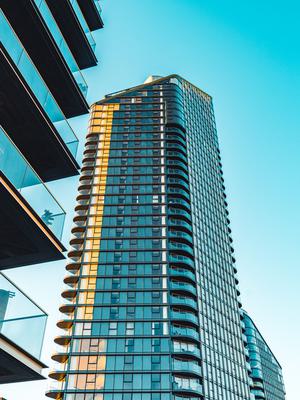Go green and make the most of your commercial real estate investment
By Gearoid Collins
Gearoid Collins, Chief Commercial Officer
November 27, 2023
Go green and make the most of your commercial real estate investment
Green buildings aren’t just good for the environment. They're also good for your bottom line. You might not think it to look at the added expense of the tech stack required or certifications like LEED and BREEAM. But that’s what top-quality tenants are looking for. They want to occupy sustainable properties equipped with smart solutions that minimise energy use and reduce their utility bills. For this and other reasons, the business case for going green is strong.
So, what is that business case, exactly? And how can you put it into action for your commercial real estate properties? In this blog I’ll cover both elements, giving you a clear picture of the financial benefits of going green and a sense of what it takes to get there.
The business case for going green
Buildings are major investments with massive upfront capital costs. One of the best ways to help ensure your investment pays off is to get high-quality tenants in your building - and keep them. The best tenants are willing to pay a premium to occupy the right space and will often attract other top-tier occupants.
What do the best tenants want? Greener, more sustainable buildings, guaranteed with certifications like LEED and BREEAM. That means
Buildings that use renewable energy. Promote water conservation and recycling. Are constructed with recycled or repurposed materials. Include features like ‘living roofs’ that further help the environment. They want green buildings. And they’re willing to pay for them.
That’s because they’re aware a sustainable property will reduce their operating expenses by lowering utility bills. And as more organizations sign on to net-zero emissions targets, they need rental spaces that will help them meet their goals. Sustainability matters in recruitment, too. By making their green credentials known, businesses can boost their brand and attract talent.
Sustainable building certifications do add cost. But their expense can be offset by the higher rents green buildings command - an average of 11.6% more than non-green buildings. It’s why sustainable buildings have faster payback periods than standard builds. And high-quality tenants paying higher rents leads to higher resale values. Between 2017 and 2021, BREEAM-certified buildings achieved capital values that were about 20.6% higher on average than their non-green counterparts.
Investing in green technology can also cut the day-to-day operational expenses of running a building. Advanced sensors connected to smart lighting and smart climate controls can tell how many people are in the building and where they are at any given time. That means lights won’t be on in empty rooms. The HVAC system won’t be cooling or heating unused floors. This can significantly lower operating costs in common areas like lifts, lobbies and maintenance spaces. Thanks to efficiencies like these, buildings where we’ve deployed Internet of Things (IoT) systems have seen energy spending fall by up to 60%.
Tenants aren’t the only ones interested in green buildings. Many governments are too, from local governments on up to federal. Based on that interest, new sustainable builds may have access to government grants that can offset construction costs. And since many cities and communities want more green buildings, sustainable construction projects can be easier to get the necessary permissions for.
If you’re like most developers, you’re working on more than one project at once in any given city. In that case, having communities and local governments aligned with your vision can help with future approvals. Also keep in mind that while many governments like to see green certifications, they’re still largely voluntary. But sustainable properties are the future, so that can always change – which means getting on board today and being familiar with the process may pay off later.
Enabling smart, energy-saving solutions
The greenest buildings are the smartest buildings. They’re equipped with advanced technologies, sensors and systems that give property owners, managers and tenants control over energy consumption. But smart solutions and IoT devices need the right kind of connectivity to work. That means fast, reliable and full-building coverage.
For your building, the best way to provide that kind of seamless wireless connectivity may be a distributed antenna system (DAS), or a private mobile network that can deliver the provide the capacity and low latency many IoT solutions require. There are also cloud-based options – connectivity-as-a-service (CaaS) and GIGAWAVE – that can bring 5G wireless connectivity to a building while taking up less space, using less power and contributing fewer CO2 emissions.
It takes a village to go green
Going green in commercial real estate isn’t cheap. But it will pay off. It draws better tenants, lets you charge higher rents and commands better resale prices. It keeps energy costs low for you and your tenants. It shows communities and city councils that you’re serious about sustainability – and someone they’ll want to keep working with today and tomorrow. But it requires a lot of expertise, a lot of experience and a lot of support. That means finding partners and vendors who share your goals.
Boldyn Networks is one of those partners. We’re committed to sustainability in our own business, with a target of net zero for scope 1 and scope 2 emissions by 2040. And we want to help those we work with reach their own green goals. Whether it’s a DAS or Wi-Fi network, GIGAWAVE or CaaS, we can bring the right kind of connectivity to your property. And our networks are neutral host, which means multiple mobile network operators can use the same infrastructure at once. This results in solutions that are more cost effective and energy efficient.
To learn more about our commitment to sustainability, check out our 2023 sustainability report.

